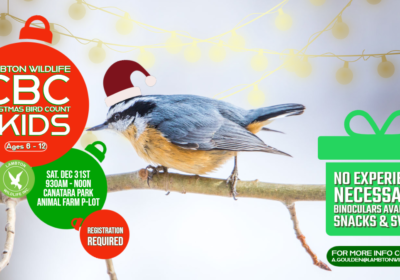It was a warm evening with a slight overcast and a bit of wind on April 15th, 2017. Tonight was the night of the Timberdoodles and Bogsuckers event held at Perch Creek Management Habitat. This event was brought back by popular demand and was well attended again. The conditions weren’t perfect, but we still hoped the star of the show has his stage set. This evening’s celebrity was the of course, the American Woodcock, otherwise known as a timberdoodle or bogsucker.

We arrived early while the evening was still bright so that we could ready ourselves for the woodcocks’ dazzling performance that was slated to begin a half-hour before sunset and last until a half-hour after sunset, weather dependent. Although Aldo Leopold once wrote that their mesmerizing sky dances alone were enough to stop a man from hunting or to “pose [them] gracefully on a slice of toast”, it is an awkward celebrity at best and looks itself like a balancing slice of toast with a long tapered butter knife for a bill. But as we know, looks can be deceiving and nature almost always has a purpose.

The American Woodcock is a soil invertebrate specialist adapted to a life of sensing and probing for creatures beneath the earth. Their awkward wobble is believed to make vibrations causing earthworms to move slightly underground. It is unknown how woodcocks exactly detect these minute movements though it thought they may use their feet and/or ears. Along with a long-tapered bill that is extra sensitive and flexible at the tip and a long sticky tongue, they are adapted to be expect extractors. With most of their senses being occupied searching for creatures beyond view underground, their eyes were free up to be positioned top of their head so that they keep watch for potential danger from above. As we know, looks can be deceiving and nature almost always has a purpose.
Before we positioned ourselves near the woodcocks’ stage, we meandered along the trails that move through forest edges and grassy meadows. Along the way, we heard the amphibian orchestra with wood frogs, green frogs, western chorus frogs, grey treefrogs, toads, and potentially others announcing their presence to their loves and fellow competitors.





A couple other birds and frogs got our attention and then a nasal toy-horn erupted…. peent….peent…peent..peent..peent.peent.peent. A male woodcock, was beginning his performance. Once the nasal peents went silent we knew the bird had launched itself in the air beginning its upward spiraling ascent. As the bird flew up towards the clouds, a twittering sound was produced. We learned that this sound was not being produced from their mouth but rather their three outer wing feathers that are stiff, narrow and spread apart during flight. The air rushing through causes them to vibrate, producing a high, mechanical, twittering sound. After disappearing beyond view, the twittering became intermittent, and the bird soon begins a zigzag descent. Zigzagging down, chirping as he goes, the male attempts to land silently (near a female, if she is present). Once on the ground, he resumed peenting and the display started over again. We learned that woodcocks often land with remarkable precision very close to where they took off from. This is probably good practice for when a female arrives and the male must impress her with his aerial displays but must make sure he lands nearby to receive his reward. As the show went on, a couple other males joined in. Peents were coming from almost all directions, twittering spirals were popping up, and zigzags were zooming over our heads as the sun receded beyond view. Alas, the time was right and the woodcocks took flight.
Even though we were not the intended audience, we thoroughly appreciated the male woodcock’s dazzling performances and hope that participants continue their own timberdoodle legacy by going out in early spring to enjoy sunsets while looking and listening for the timberdoodle sky dance.



